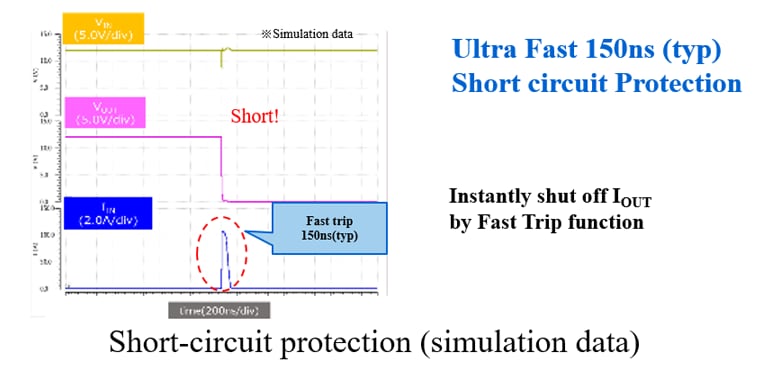- General Top
- SEMICONDUCTOR
- STORAGE
- COMPANY
-
My ToshibaSemicon
- Semiconductor Top
-
ApplicationsAutomotive
Body Electronics
xEV
In-Vehicle Infotainment
Advanced Driver-Assistance Systems (ADAS)
Chassis
IndustrialInfrastructure
BEMS/HEMS
Factory Automation
Commercial Equipment
Consumer/PersonalIoT Equipment
Healthcare
Wearable Device
Mobile
Computer Peripherals
-
ProductsAutomotive Devices
Discrete Semiconductor
Diodes
Transistors
Logic ICs
Analog Devices
Digital Devices
Wireless Devices
※
: Products list (parametric search)
Power SemiconductorsSiC Power Devices
※
: Products list (parametric search)
Isolators/Solid State RelaysPhotocouplers
Digital Isolators
Solid State Relays
Fiber Optic Transmitting Modules
※
: Products list (parametric search)
MOSFETsIGBTs/IEGTsBipolar Transistors※
: Products list (parametric search)
Diodes※
: Products list (parametric search)
MicrocontrollersMotor Driver ICsIntelligent Power ICs※
: Products list (parametric search)
Power Management ICsLinear ICs※
: Products list (parametric search)
General Purpose Logic ICsLinear Image SensorsOther Product ICsOther Product ICs
※
: Products list (parametric search)
-
Design & Development
-
Knowledge
- Where To Buy
- Part Number & Keyword Search
- Cross Reference Search
- Parametric Search
- Stock Check & Purchase
This webpage doesn't work with Internet Explorer. Please use the latest version of Google Chrome, Microsoft Edge, Mozilla Firefox or Safari.
require 3 characters or more. Search for multiple part numbers fromhere.
The information presented in this cross reference is based on TOSHIBA's selection criteria and should be treated as a suggestion only. Please carefully review the latest versions of all relevant information on the TOSHIBA products, including without limitation data sheets and validate all operating parameters of the TOSHIBA products to ensure that the suggested TOSHIBA products are truly compatible with your design and application.Please note that this cross reference is based on TOSHIBA's estimate of compatibility with other manufacturers' products, based on other manufacturers' published data, at the time the data was collected.TOSHIBA is not responsible for any incorrect or incomplete information. Information is subject to change at any time without notice.
require 3 characters or more.
How does short-circuit protection of eFuse IC (electronic fuses) work?
Short-circuit protection is a protective function, also known as fast trip.
The following is an explanation based on the operation example of the TCKE8 series.
Please check each the data sheets for details.
When a large current (exceeding the set current) flows instantaneously through the MOSFET, the eFuse IC determines that the output is short-circuited, and shuts down the MOSFET in a very short time. After shutdown, the MOSFET is automatically turned on by a timer set inside the eFuse IC. At this time, if there is no abnormality in the subsequent ICs or circuits, eFuse IC operates normally. However, if there is a reason for overcurrent to flow, eFuse IC performs overcurrent protective operation.
In the overcurrent protectionthe of auto-retry type, the output current is limited by the overcurrent protection, the output is shut down when the junction temperature rises to the temperature of thermal shutdown, and when the junction temperature drops, the output turns on again to limit the output current.
After that, the recovery cycle is repeated by the following cycles until the overcurrent is eliminated:
“Operation stop → Temperature drop → Overheat protection release → Current clamp → Temperature rise → Overheat protection → Operation stop.”
The overcurrent protection of the latch type shuts down the output when an overcurrent is detected and retains the output off state. Releasing the output-off is performed by once dropping EN/ UVLO signal to the "L" level and then inputting the "H" level signal again.

- The following documents also describe eFuse IC, so please refer to them.
Basic Usage and Functions of eFuse IC
TCKE712BNL eFuse IC with Flag Output and Reverse-Current Protection
eFuse IC Glossary - Parametric searches for all eFuse IC products are available here:
Parametric search - Purchasing eFuse IC here
Stock Check & Purchase